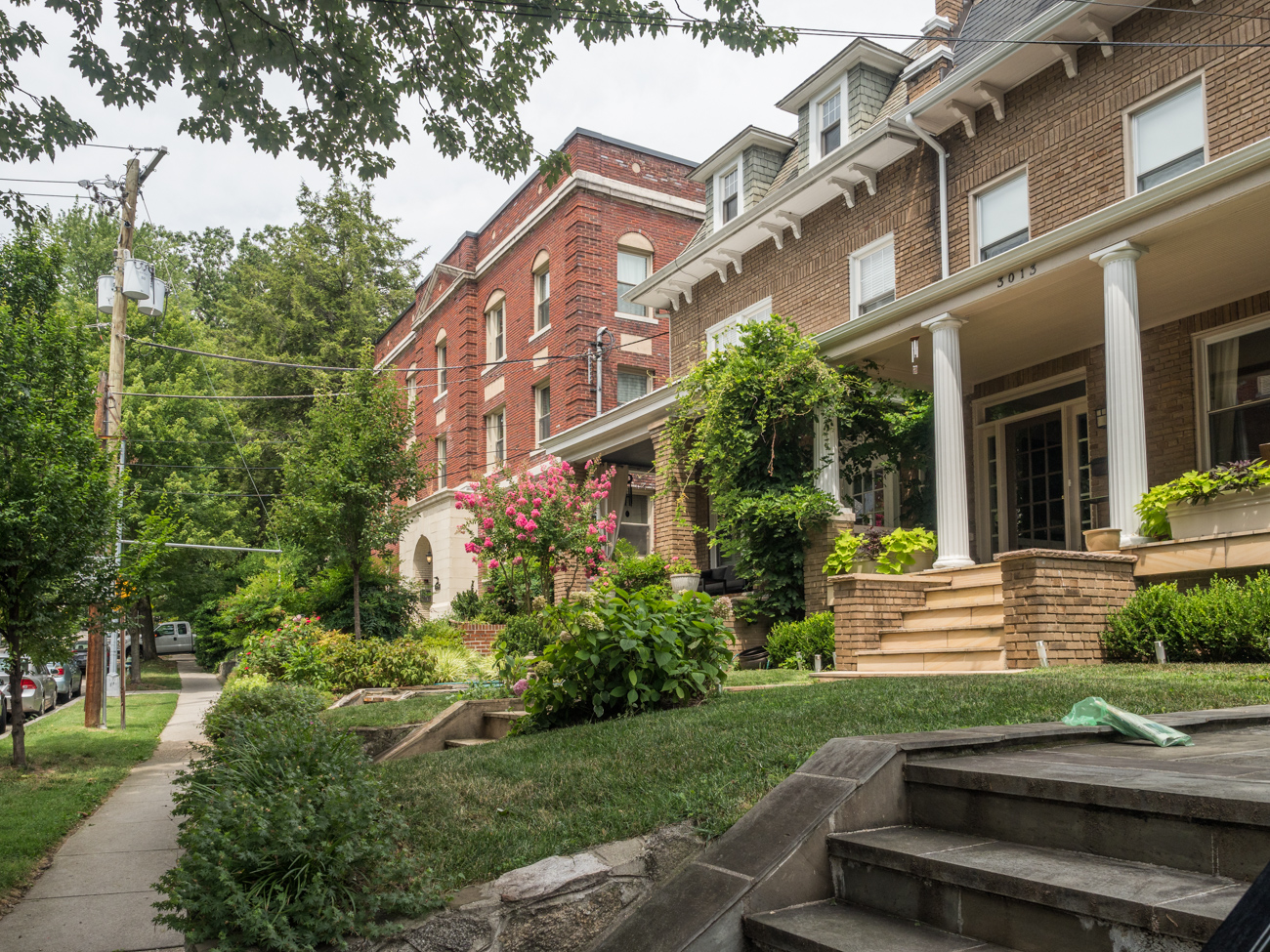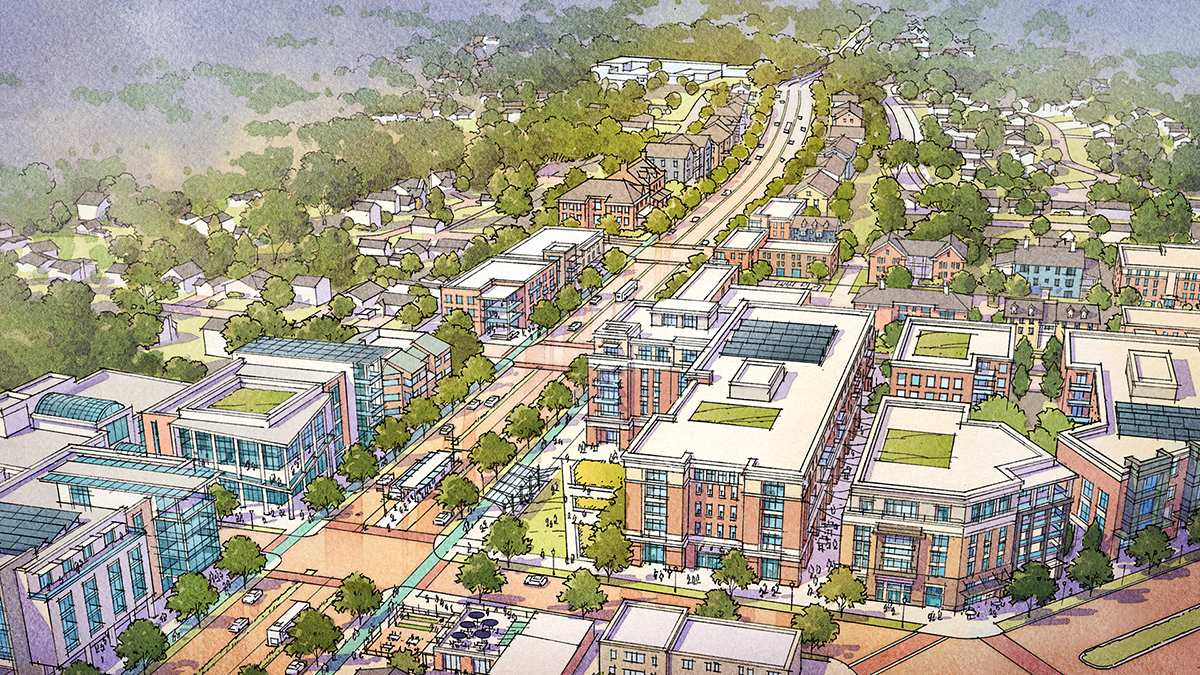By Montgomery Planning Board Chair Artie Harris and Montgomery Planning Director Jason K. Sartori
Note to the reader: this content was originally published in the Affordable Housing Conference of Montgomery County, MD 2025 Journal

Montgomery County is a great place to live, work, play, and learn. Like many communities nationwide, though, our status quo is no longer working when it comes to housing. Currently, the county has over 1 million residents and is expected to add 200,000 more over the next 25 years, but we are not building housing fast enough to keep up with this growth. As prices and rents have skyrocketed in recent years due to a lack of supply and other real estate market forces, current and prospective residents are looking elsewhere; U.S. Census Bureau data show we had 26,000 fewer middle-income residents in 2022 compared to 2005.
We’re also running out of space for new development with such a large amount of our residential land restricted to single-family detached housing. While the share of single-family detached homes has decreased (86% of the housing stock was single-family detached in the 1950s, compared to 46% in 2024) with construction of apartment buildings outpacing other types, the land dedicated to single-family detached housing has remained high. Over 90% of residential land in the county is dedicated to single-family detached housing, compared to just 5% of residential land for multi-family (36% of the housing stock). House-scale products like duplexes, triplexes, and quadplexes, can create modest opportunities for new housing in our single-family dominated neighborhoods. County zoning regulations frequently preclude much-needed alternatives in existing residential areas, like triplexes, small apartment buildings, or townhouses. This lack of housing options puts the county at an economic disadvantage in the region due to losses in prospective workforce talent, and demonstrates our need to provide more and different types of housing across the board.
The only path forward is a “more of everything” approach that prioritizes building housing that people can afford in locations that offer convenient and reliable access to amenities and jobs. The housing crisis is not getting any better – the status quo isn’t working. Montgomery Planning and the Planning Board have laid out two primary pathways for realizing a future with more housing, including more affordable and attainable housing, for current and future residents.
First—and already beginning—is our corridor-focused growth strategy. Corridors have long been the connective tissue of Montgomery County and its communities. Thrive Montgomery 2050 focuses on leveraging their existing or planned transit to connect residents to jobs, services, and other destinations. Thrive highlights several existing and evolving corridors on which to build out this strategy, including Rockville Pike/MD 355, Columbia Pike/US 29, and University Boulevard.
Corridor-focused growth is also central to transitioning the county’s growth toward more efficient and sustainable land use by encouraging compact growth along these corridors. This approach also enables better connectivity. Future growth centered around transit stations and along mixed-use corridors fosters more walkable, bikeable, and transit-accessible communities that connect residents, employees, and visitors to each other and the region.

This growth strategy also accounts for the county’s diversity of land uses. Montgomery County has various types of neighborhood centers, with small, medium, and large populations served by various residential and commercial densities that require different types of corridors to connect them effectively:
- The more urban Downcounty, adjacent to the nation’s capital, largely contains transformational growth corridors that invite high-density, mixed-use development and frequently spaced protected crossings, consistent with the Complete Streets Design Guide.
- Midcounty anticipates moderate, medium-density growth corridors, largely within mixed-use developments, especially in activity centers.
- The more rural Upcounty, dominated by the Agricultural Reserve, will likely contain low-to-moderate densities and varied uses that still connect or reconnect communities.
While each specific corridor will be unique in its growth context, their future development will be initiated and pursued in consultation with community members with the shared goal to connect people with places, while also expanding opportunities for less dependence on cars.
The second approach to a more expansive housing future in Montgomery County involves introducing more units across more housing types, with an emphasis on “Missing Middle Housing” that bridges the gap between large detached single-family homes and high-rise apartment buildings better suited to activity centers and downtown areas rather than residential neighborhoods. Missing Middle types include everything from duplexes and triplexes to smaller multi-unit apartment buildings and townhouses. These units are also more likely to create homeownership opportunities, compared to the new multifamily units being added to the county’s supply today. Due to their smaller size compared to new single-family detached units, the price points for newer, smaller multi-unit structures will be more accessible to more households wanting to enter the homeownership market.
Montgomery Planning and the Planning Board are eager to advance strategies that both allow for diversifying our housing stock and advancing corridor-focused growth in the coming months and years, starting in the University Boulevard Corridor, with recommendations to increase housing options, strengthen the area’s long-term resilience, and advance complete street concepts. Going forward, such master plans will include recommendations for additional housing across types, sizes, and price points, with an eye toward making the changes needed to realize the desired vision.
This vision for the future requires not only intentional planning but also meaningful collaboration with and buy-in from county leadership and community members alike. We look forward to actively, urgently, and collaboratively pursuing the vision of housing abundance laid out in Thrive Montgomery 2050.
 About the authors
About the authorsBefore his appointment as Planning Board Chair in 2023, Artie Harris was the vice president of real estate at Montgomery Housing Partnership, Inc. (MHP), a nonprofit real estate development organization based in Silver Spring, MD, that creates affordable communities in Montgomery County and surrounding jurisdictions. Previously, Harris was a vice president at Bozzuto Development Company, where he led teams developing market-rate and mixed-income housing projects across the Washington, DC region and beyond. He holds a master’s degree in business administration from Stanford University and a master’s degree in civil engineering from Purdue University.

Jason Sartori joined Montgomery Planning in January 2016 and served as the Chief of the Countywide Planning and Policy (CPP) Division from 2019 to 2023 before his appointment as Planning Director in 2023. Jason previously served as the Associate Director of the National Center for Smart Growth at the University of Maryland. While there, he led numerous projects related to affordable housing, transportation modeling, opportunity accessibility metrics, economic development, and growth visioning and scenario evaluation. He holds a master’s degree in community planning from the University of Maryland.
Bruce Shulman
Despite the statement that the Planning Board wishes to consult with community members, in reality it has woefully failed. Consultation means not just listening or soliciting comments. It means actually acting in accordance with at least some of the comments submitted by community members. The Planning Board’s failure to adopt virtually no suggestions made by the public in connection with the University Boulevard Corridor Plan proves the validity of my contention.
The assertion that the Planning Board wishes to foster more walkable and bikable communities near transit centers is utterly laughable. At the same time that the Board is instrumental in closing lanes on University Blvd. and Georgia Ave. to cars, it is intentionally putting more cars on the road to cause gridlock. The prime example is the planned Wheaton Gateway development directly across from Westfield Wheaton and one block from the Wheaton METRO and bus depot. This development is planned to contain 790 housing units ( a good thing) and 1,100 parking spaces ( which, under any circumstances, is ridiculous).
Finally, the Board talks about placing new development around corridors and transit centers. Yet, virtually all of the newly planned development is centered on the southern and eastern quadrant of the County. Are 270, Old Georgetown Rd., Montrose Rd., River Rd. and all of Norbeck Rd. not transit centers? By confining this development to the southern and eastern part of the County no matter what it is called (Thrive Montgomery, a Corridor Plan or More Housing Now) the Board, in effect, is validating the suspicions held by many residents that Silver Spring, Wheaton, Aspen Hill and surrounding communities are being singled out for increased dense development, while Bethesda, Chevy Chase, Potomac, Noth Rockville, Clarksburg and other communities are exempted because they are wealthier and have the influence to prevent this type of development from occurring in their communities. We in the southern and eastern part of the County are willing to do our part, but NOT when are parts of the County exempted.
In short, the article written by the heads of the Planning Board contains a lot of inaccurate information. If Messrs. Harris and Sartori really think what they have written is accurate, they should be willing to meet directly with residents to hear and ACT on community concerns instead of hiding behind inaccurate written claims.